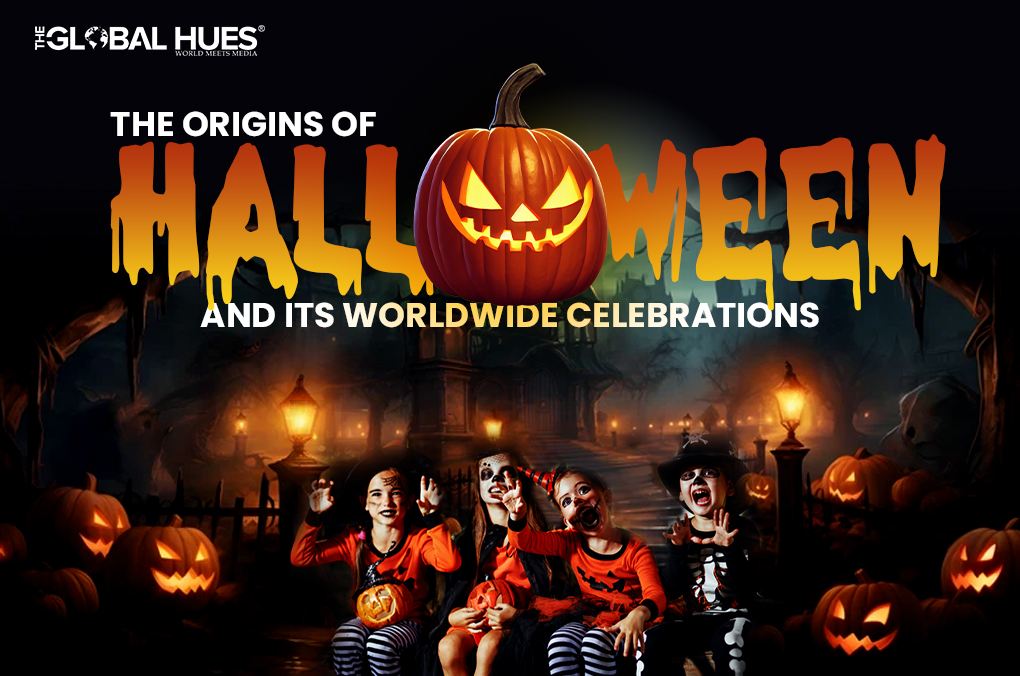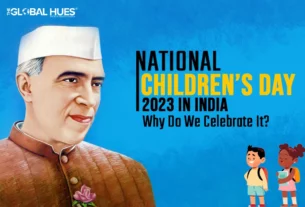Do you like scary movies? Do you like pranking your friends as a ghost? If yes, then Halloween is the right festival for you. People have been celebrating Halloween for more than a thousand years. Today it is celebrated as a holiday for dress-up and fun.
Let’s take a look at the history and importance of Halloween.
History Of Halloween
Halloween is a festival that is celebrated on October 31 every year. It revolves around wearing costumes to ward off spirits and enjoying various festivities. Halloween is a festival that is originated from the Celtic festival of Samhain – when people would light bonfires and wear costumes to ward off ghosts. Today, Halloween is a day of activities like trick-or-treating, carving jack-o-lanterns, festive gatherings, donning costumes and indulging in sweet treats.
According to Celtic legends, this day marks the end of summer, the harvest, and the beginning of winter, and on this day, the boundary between the spirit and the human world gets blurred. The Celts believe that in addition to causing trouble, the spirits allow the Celtics to make predictions. By the late 1800s, the Americans converted Halloween into a holiday more about community rather than being a celebration of ghosts, pranks, and witchcraft.
The concept of trick-or-treating has its origins in an older tradition known as “souling,” the tradition of going door to door asking for “soul cakes,” a treat similar to biscuits in exchange for the dead in purgatory. In the 1900s, the custom of collecting candy from households became popular, with families providing treats to children to prevent them from playing tricks. According to the National Retail Federation, over 179 million Americans celebrate Halloween and spend almost $9.1 billion on it.
Importance Of Carving Pumpkins on Halloween

The Jack-o-lanterns have a long history with Halloween. Their origin comes from an Irish myth about Stingy Jack, who tricked the Devil for his monetary gain. When he died, he wasn’t allowed in heaven or hell. He was sentenced to roam the Earth for eternity. In Ireland, people started carving demonic faces out of turnips to frighten Jack’s wandering soul. When they immigrated to America, they carved pumpkins as they were native to America.
Trick Or Treating
In the United States and Canada, trick-or-treating has become a favourite custom since the 1950s. Children of all ages dress up in costumes and go from house to house to get treats when they say trick-or-treating. The phrase is like a subtle suggestion that the kid will not perform tricks on the owner if they receive treats. This custom originated in the ancient practice of “souling” and “guising.” Here, souling consisted of going door to door asking for food in return for the dead on All Souls Day. Guising is the custom of wearing costumes, masks, or other forms of disguise.
This custom began in Scotland in the 19th century, where the children dress up like ghosts to keep them away from themselves. They carried lanterns carved out of hollow turnips and went to various houses to ask for treats, cakes, fruit, and money.
Halloween Celebration Around The World
When we think about Halloween, we remember carved pumpkins, children shouting trick or treat, and costumes. But different countries celebrate Halloween differently, and here is the breakdown of them:
Mexico
Children go trick-or-treating on 31 October. They celebrate el Día de los Muertos, or Day of the Dead, on Nov 1st and 2nd. This holiday dates back to pre-Columbian Mesoamerica when the gates of heaven opened and allowed the spirits to reunite with their living family members. Festival goers don skull masks and eat skull candies. The festival was once celebrated in the rural areas, and now it is celebrated in the major cities of Mexico.
England
In this country, the celebration of Halloween gets overshadowed by another festival called Guy Fawkes Day. On November 5, the British celebrate the failed assassination of King James I by Guy Fawkes. They celebrate the holiday by burning bonfires, and instead of trick-or-treating, children ask for a “penny for the guy.”
Italy
On November 1, the Italians celebrate Ognissanti, or “all saints.” The celebration varies- in Sicily, the deceased bring gifts for the “good” children, while in Sardinia, children go from door- to door asking offerings for the dead. Romans eat dinner near the gravesites of their loved ones and people from Abruzzo and Trentino fashion lanterns by placing candles in pumpkins.
Guatemala
The Guatemalans honour the dead through a “giant kites” festival. The kites go up to 40 feet in the air. They are often hand-painted and flown over the graves of loved ones, and the kites act as the bridge between the living and the dead.
Japan
Halloween is a new holiday in Japan since they already have a festival for the deceased, and trick or treating isn’t favoured. People wear costumes and go to celebrate in clubs and pubs.
China
The Qingming festival in China, celebrated in April, is a festival that celebrates the dead. The day is known as Tomb Sweeping Day – where Chinese people sweep the tombs of their loved ones. The Chinese consider this as the most respectful act to honour the deceased.



